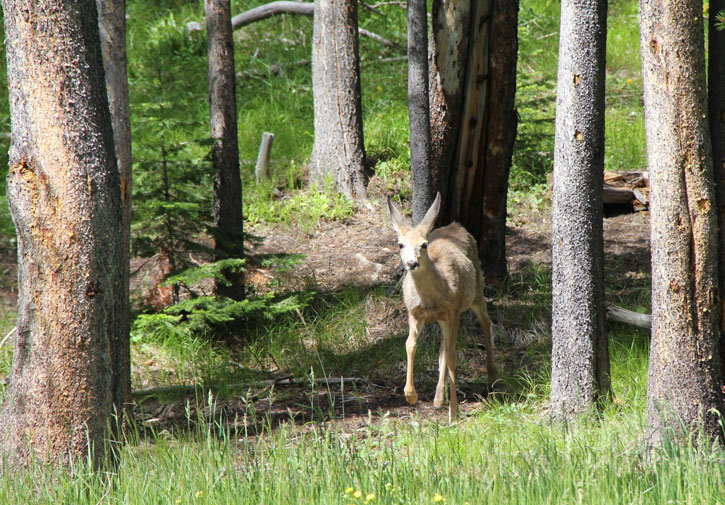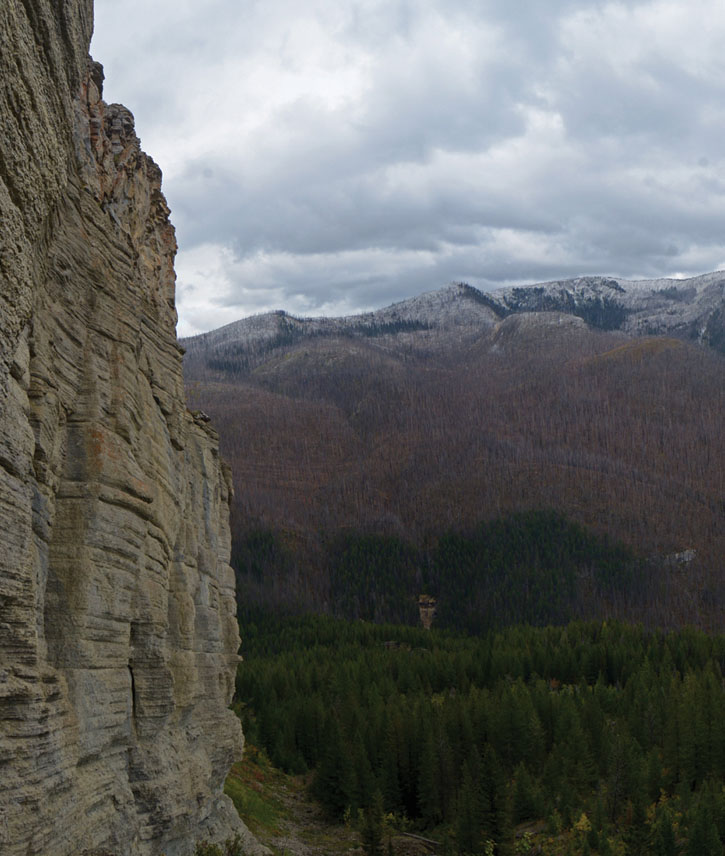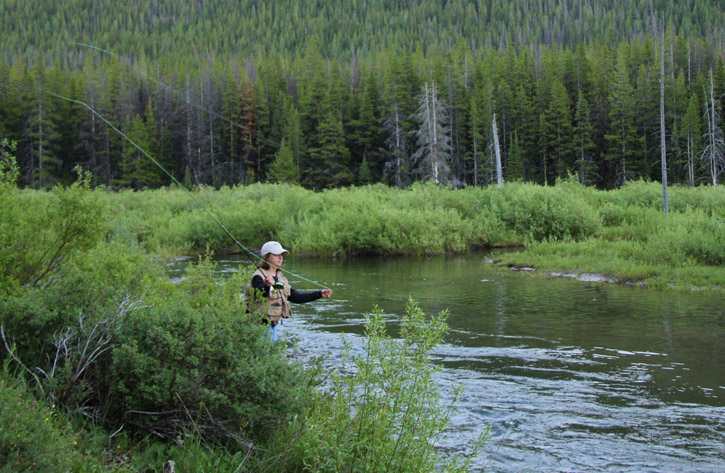
A mule deer roams around Webb Lake Ranger Station in the Scapegoat Wilderness. Photo by Brandan W. Schulze, © Forest Service Northern Region, licensed Creative Commons Attribution.
In a one-man crusade as the U.S. Forest Service’s Lands Division chief, [Bob Marshall] placed 5.4 million acres of vulnerable land under wilderness protection.The complex is named for Bob Marshall, a young forester who became a local legend in 1925 with marathon 30-mile mountain treks around the Missoula area. Later, he penned The Problem of Wilderness, a treatise defining principles that would shape the movement to preserve the country’s wildlands. In a one-man crusade as the U.S. Forest Service’s Lands Division chief, he placed 5.4 million acres of vulnerable land under wilderness protection. Along with Aldo Leopold and others, he launched the Wilderness Society in 1935, but he died four years later at age 38.In 1941, the South Fork, Pentagon, and Sun River areas south of Glacier were set aside as primitive zones, and finally, after 66 drafts, the 1964 Wilderness Act protected them from development. As part of the act, the three primitive-zone areas were combined to create the one-million-acre Bob Marshall Wilderness.

Overlooking the Silvertip Creek drainage and the Flathead Mountain Range in the Bob Marshall Wilderness from Limestone Peak in the Flathead National Forest. Photo by Randy Beacham, © Forest Service Northern Region, licensed Creative Commons Attribution.
Unprecedented lobbying by a citizens group from the town of Lincoln led by a hardware store owner resulted in the adjacent Scapegoat Wilderness, adding 239,936 acres to the south end of the area in 1972. Scapegoat is home to 50 miles of the 3,100-mile-long Continental Divide Trail. Six years later, a third wilderness area was added to the complex—the Great Bear Wilderness, adding 286,700 acres of land to the northwest. Tucked between Hungry Horse Reservoir and Glacier National Park, the Great Bear has 300 miles of trail; the elevation tops out at 8,700 feet on Great Northern, the sweeping peak seen from Flathead Valley.

A fly fisherman casts her line into Meadow Creek in the Scapegoat Wilderness. Photo by Brandan W. Schulze, © Forest Service Northern Region, licensed Creative Commons Attribution.
Together these three wilderness areas, along with Glacier National Park, provide 2.5 million acres of habitat for species such as grizzly bears, lynx, and wolves. The wilderness complex is managed jointly by Flathead, Lewis and Clark, Lolo, and Helena National Forests.
Excerpted from the Fifth Edition of Moon Glacier National Park.